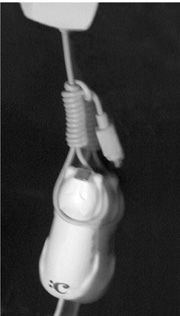In the run-up to the Georgia run-off election for the Senate, one man has stepped forward as a self-proclaimed 'pattern recognition expert', claiming to be on 'approximately about 12 billion devices globally', and erstwhile 'full-blown treasure hunter' (dig it-the Ark of the Covenant is on Oak Island!), and most notoriously, the inventor of the:CueCat.


- Download cuecat for Windows to keyboard driver. Download cuecat for Windows to keyboard driver. Join or Sign In. Sign in to add and modify your software. Continue with Facebook Continue with email.
- 3rd-party Cuecat drivers for Linux pose no serious threat to DC's business model. Even if every Linux desktop user got a Cuecat, it wouldn be a drop in the bucket compared to their Windows audience. No, the problem is what happens when alternative drivers show up in the Windows shareware and commercial worlds.
- Phillips-head Screwdriver (to get the:Cat apart) Small screwdriver, razor blade, pen knife of X-Acto knife (take your pick) for cutting or prying (Optional) Piece of wire The first thing you need to do is remove the 2 or 4 screws (depending on which version you have) that hold the case together.
About
Cuecat Driver

Cuecat Scanner Driver

The CueCat is a nifty little piece of hardware. It's an optical barcode reader that plugs into your PS/2 port. Simply swipe the glowing red 'mouth' of the reader across a standard barcode, and the output is fed into your computer via the keyboard interface. Neat!
How much would you expect to pay for one of these cool toys? $30? $15? $7? The answer? Nothing! You may be asking 'How'd you manage that?', but it's actually quite simple. Go to your local Radio Shack, walk up to a clerk,and simply say 'Hi! I want a CueCat!' (If they give you a blank stare, say 'You know, the barcode thingie.') The clerk will say 'Cool!', and proceed to hand you a Special Radio Shack catalog (with barcoded item identifiers), and a bag containing a CueCat CDROM, instruction guides, and the Barcode Reader. Give the clerk some information (name, address, etc.), and you walk out with a free barcode reader! (Note: This information is no longer valid, as RadioShack no longer distributes the CueCat, and Digital Convergence has pretty much gone out of business. Surprise!)
Now, the dilemma. What do you do with your new found toy?
The idea of the product isn't a bad one. The software that comes with the CueCat reads the barcodes you scan, connects to the main server, and compares the barcode you scanned with the ones present in its database. If it finds a match, the software will kick you to the cooresponding website. So say you're drinking a Pepsi. You scan the barcode off the bottle, and your computer connects you to Pepsi's website. The system recognizes thousands of barcodes, and knows the relevant websites. The bad part, is that each scanner is assigned a unique serial number. When you install the CRQ software, you are given a unique 'activation' number. These numbers are attached to you, and your name floats around as a candidate for targetted advertising and Gestapo habit-tracking. Screw that.
We're not interested in the software. (Mine hasn't even been opened.) We're interested in the neat little reader, and the unlimited possibilities that it brings!

Cuecat Driver
When you connect your reader, open up a text editor and scan a barcode. You'll see something like this:
.C3nZC3nZC3nYD3b6ENnZCNnY.fHmc.C3D1Dxr2C3nZE3n7.
The output isn't what you expected, is it? That's because there's a lot more information in there than a simple 12 digit number sequence. The output isdivided into 3 sections, seperated by periods.
The first (and usually longest) section is your unique serial number, assigned to your CueCat. This string never changes, regardless of what you scan. An ALT+F10 Signal preceeds the serial number, as a 'wake-up call' to the software.
The second string defines the barcode type. There are many types of barcodes out there, from UPC and its variants, to ISBN, EAN, and others. This is the part of the output that identifies which type it is.
The third, is the barcode data itself. The reason it's not simply a numeric sequence, is because the makers of the CueCat didn't want their toy to be used for reasons other than its intended purposes. So they implemented a weak 'string substitution' style of encryption. (In reality, base64+XOR)
Give a geek a cool toy, and he will play with it. Give millions of geeks the same toy, and it evolves into a new toy.